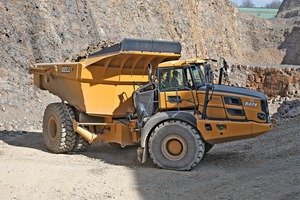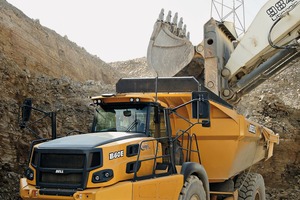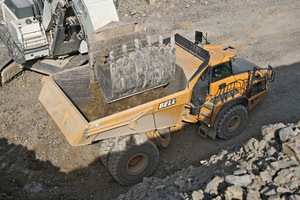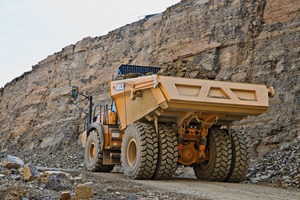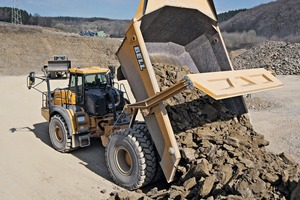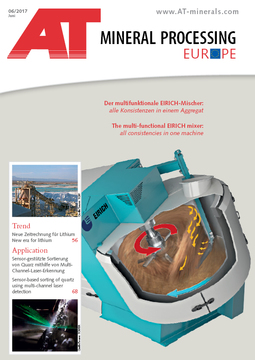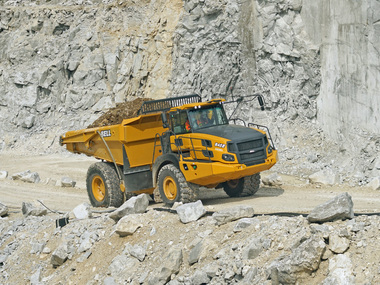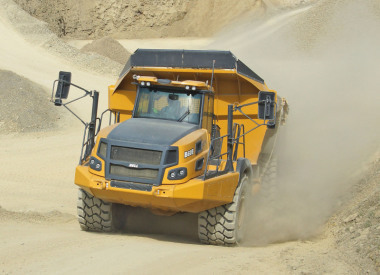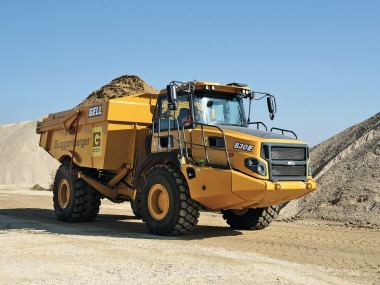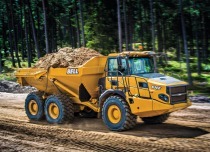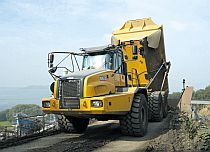The four-wheel-drive two-axle Bell B60E impresses with its great flexibility and high cost efficiency
In March this year, the first “European” Bell B60E went into operation at Schiewe Steinbruchbetriebe, a quarrying company in Lemgo/Kirchheide/Germany. The four-wheel-drive two-axle ADT works as a hauler in the extraction of shell limestone. In operation, the Bell B60E impresses with its great flexibility and high cost efficiency.
With three limestone operations in the Detmold/Lemgo area, Schiewe Steinbruchbetriebe, established in 1949, is one of the largest aggregate and construction materials suppliers in the Eastern Westphalia-Lippe region of Germany. Stationary plants with downstream concrete and asphalt production at the Detmold/Bentrup main site and in Sonneborn/Barntrup lying east cover the entire range of high-grade aggregates for construction applications. In addition, Schiewe supplies mineral fertilizer and, for some time now, has also been involved in the recycling of used building materials from road and building construction. Shell limestone has been extracted at the Lemgo/Kirchheide site since back in the year 2000. A good 300 000 t/a coarse grades for road substructures, building foundations and geological barriers are currently produced here with mobile mineral processing equipment. By the end of the decade, the family-run company, now managed in the third generation, is planning the installation of another large-scale stationary crushing plant in Kirchheide.
The total operating area today comprises around 20 hectares in Lemgo/Kirchheide, around a half of which is actively worked. On a large part of the remaining area, backfilling has already been completed and this is where the new plant will be erected. The material is extracted blast-free with a 120-t shovel excavator, the six active levels reach down to a depth of 60 m. Accordingly, narrow bends and slopes with up to 30 % gradient are features of the maximum 1000-m-long circuits arriving at the mobile 0/100 scalping unit sited uphill as the first production stage. Because of the all-year-round operation and the large volume of overburden – partly because of the up to 5 m thick covering layer – Operations Manager Thomas Kalkreuter has so far used 6 x 6 40-tonne trucks for material transport. Like all conventional large dump trucks, these, however, showed all the usual deficits of earthmoving dump trucks in quarry operation: Despite manoeuvring, after three loading cycles of the 7.7-m³ bottom-dump shovel in the typical blast material, the trucks reached their limit and despite gready boards, the ADTs went on their way with a payload of just 35 t. Other design concessions of the three-axle trucks were the limited manoeuvrability on the maximum 30-m-wide berms and the cost-intensive route maintenance in the narrow bends owing to the curve characteristics of the rear double-axle, which also resulted in increased tyre wear.
In comparison, the Bell B60E impresses with four fast face shovel operating cycles and leaves the loading point with an average payload of 54 t. Here the classic rock type bin with flat bottom pays off with a much better filling level for the coarse material without time-intensive manoeuvring. Even after the upgrade to an 8.0-m³ shovel excavator planned for the near future, 55 nominal tonnes give the excavator operator ample reserves, who can always keep an eye on the effective payload thanks to the load lights. The automatic tailgate is used in Kirchheide mainly to reliably avoid load losses on slopes. But in terms of figures it actually increases the dumper capacity by a good 2 m³, so especially when the truck is loading the easy-flowing overburden, it is certainly worth keeping an eye on the onboard weigher installed as standard.
In operation, the Bell B60E (empty: 42.5 t; loaded 97.5 t) excels with a balanced, but all times adapted road performance. This is ensured not only by the system-related advantages of the two-axle dump truck, but especially by the active front chassis with dumper tyres (875/65 R29), load balancing and tilt adjustment and the suspension-strut-supported 70 tonne rear axle with standard twin tyres (24.00 R35). With automatic differentials in axles and drive train, a 7-gear Allison automatic transmission directs the power of the 430 kW Mercedes-Benz straight six-cylinder engine (max. 2750 Nm at 1300 rpm) to all four wheels. As in all Bell large dumpers of the new generation, large-size wet multi-disc brakes work as the service brakes and also effect the multistage preselected automatic retarder function. Other plus points are the sensor-based assistants that support the driver at the dumping point and in typical driving situations (hill start, long downhill routes, etc.) and therefore ensure a productive process. Translated into field operation at Schiewe Steinbruchbetriebe, this means after around two months of use, an average consumption of just under 20 l/h for a calculated payload of around 275 t/h.
$(LEhttp://

